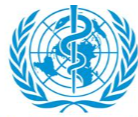Introduction
The rising prevalence of autism spectrum disorders (ASD) has spurred extensive research into potential environmental and biological triggers. While much attention has been given to factors such as aluminum in vaccines, emerging evidence suggests that Mycobacterium avium subsp. paratuberculosis (MAP), a resilient bacterium linked to Johne’s disease in ruminants, may play a significant role. Found in milk and dairy products, including baby formula, MAP’s potential as a vector in autism development warrants closer examination. This article explores the historical evolution of MAP from its origins in Johne’s disease, its adaptation into a resistant superbug due to antibiotic use in livestock, and its hypothesized link to autism, drawing on pioneering research by Thomas J. Borody, John Aitken, and Rodrick Chiodini.
Historical Context: From Johne’s Disease to MAP as a Superbug
MAP is the causative agent of Johne’s disease, a chronic enteritis affecting ruminants such as cows, sheep, and goats. First identified in the late 19th century by Heinrich Johne, the disease leads to reduced milk yields, infertility, and eventual animal death, posing significant economic challenges to the dairy industry (Matthews et al., 2021). Johne’s disease shares clinical and pathological similarities with Crohn’s disease in humans, prompting speculation about MAP’s zoonotic potential.
The widespread use of antibiotics in livestock, beginning in the mid-20th century, marked a turning point in MAP’s evolution. Antibiotics were employed not only to treat infections but also as growth promoters in concentrated animal feeding operations (CAFOs). This practice, involving sub-therapeutic doses of antibiotics like tetracyclines and macrolides, created selective pressure that favored the survival of resistant bacteria (McKenna, 2017). MAP, a member of the Mycobacterium avium complex, proved particularly adept at developing resistance due to its slow growth rate and robust cell wall, which impede antibiotic penetration (Matthews et al., 2021).
By the late 20th century, MAP had emerged as a superbug, resistant to many standard antibiotics. Its ability to survive pasteurization processes further amplified its persistence in milk and dairy products (Grant et al., 2002). Contamination occurs through direct shedding into milk from infected udders or indirectly via fecal matter during milking, with inadequate hygiene exacerbating the issue (Robertson et al., 2017). The resilience of MAP in the dairy supply chain, including powdered milk used in baby formula, has raised concerns about its transmission to humans, particularly vulnerable populations like infants.
MAP in Milk and Baby Formula: A Pathway to Human Exposure
Infants fed baby formula may be at heightened risk of MAP exposure due to the bacterium’s presence in powdered milk. Studies have detected MAP DNA in commercial milk products, including infant formula, across multiple countries (Grant et al., 2002; Robertson et al., 2017). Unlike breast milk, which contains natural antimicrobial factors, formula lacks these protective components, potentially increasing susceptibility to MAP-related effects (Naser et al., 2004). MAP’s ability to survive high-temperature, short-time (HTST) pasteurization means that even processed dairy products may harbor viable bacteria, posing a risk to infants whose immune and gastrointestinal systems are still developing.
The gut microbiome plays a critical role in early neurodevelopment, and disruptions caused by pathogens like MAP could have lasting consequences. MAP’s propensity to colonize the intestinal mucosa and trigger chronic inflammation mirrors the gut dysbiosis observed in some children with autism (Finegold et al., 2012). This connection suggests that MAP exposure through formula feeding could contribute to neurodevelopmental alterations, particularly in genetically susceptible individuals.
Research Linking MAP to Autism
Thomas J. Borody
Dr. Thomas Borody, a gastroenterologist and pioneer in fecal microbiota transplantation (FMT), has explored the role of gut dysbiosis in neurodevelopmental disorders. His work suggests that MAP-induced inflammation in the gut may disrupt the gut-brain axis, a critical pathway in autism pathogenesis. In a case study, Borody reported improvements in autism symptoms in an adult male following antibiotic therapy targeting MAP, followed by FMT (Borody et al., 2014). While preliminary, these findings highlight the potential of MAP as a modifiable environmental factor in ASD. Borody’s research emphasizes the need for targeted antimicrobial therapies to address MAP infections in vulnerable populations, including children.
John Aitken
Microbiologist John Aitken has focused on MAP’s role in Crohn’s disease and its broader implications for human health. Aitken developed a blood culture test to detect MAP in humans, revealing its presence in a significant proportion of Crohn’s patients (Aitken, 2017). Given the overlap between Crohn’s and autism in terms of gut dysbiosis and immune dysregulation, Aitken’s work suggests that MAP could act as a trigger for neurodevelopmental disorders. His advocacy for anti-MAP therapies, including antibiotics like rifabutin and clarithromycin, underscores the need for early intervention to mitigate MAP’s effects in infants exposed through formula.
Rodrick Chiodini
Dr. Rodrick Chiodini’s groundbreaking research in the 1980s established a link between MAP and Crohn’s disease, isolating the bacterium from affected patients (Chiodini, 1989). His findings sparked interest in MAP’s zoonotic potential and its possible role in other disorders, including autism. Chiodini’s work highlights the higher prevalence of MAP in Crohn’s patients compared to controls, suggesting that chronic MAP infection could contribute to systemic inflammation and gut-brain axis dysfunction, both of which are implicated in autism (Chiodini et al., 2012). His research calls for improved diagnostic tools and public health measures to reduce MAP exposure through the food supply.
Aluminum in Vaccines vs. MAP: A Comparative Perspective
The hypothesis that aluminum adjuvants in vaccines contribute to autism has garnered significant attention, driven by concerns about neurotoxicity. However, the evidence linking aluminum to autism remains inconclusive, with large-scale studies showing no consistent association (Jefferson et al., 2004). This focus on vaccines may overshadow other environmental factors, such as MAP, which have stronger biological plausibility due to their impact on the gut microbiome.
MAP’s role in autism is supported by its ability to induce chronic inflammation and dysbiosis, which align with the gastrointestinal and immune abnormalities observed in many children with ASD (Finegold et al., 2012). Unlike aluminum, which is rapidly cleared from the body, MAP can persist in the gut for years, creating a sustained inflammatory state that may disrupt neurodevelopment. The lack of standardized tests for MAP in humans, as noted by researchers like Borody and Aitken, complicates efforts to quantify its impact, but the growing body of evidence warrants a shift in research priorities.
Challenges and Future Directions
The hypothesis linking MAP to autism faces several challenges, including the absence of certified diagnostic tests for human MAP infection and the ethical barriers to conducting causation studies. Koch’s postulates, which require demonstrating that a pathogen causes a disease by transferring it to a healthy host, are difficult to apply to MAP due to its slow growth and the unethical nature of infecting humans (Lipton, 2017). Nonetheless, animal studies, such as those feeding MAP to baby goats and inducing Johne’s disease, provide compelling evidence of its pathogenicity (Naser et al., 2004).
Public health measures to reduce MAP in the dairy supply chain are critical. Enhanced pasteurization techniques, stricter udder hygiene standards, and routine testing of dairy herds for Johne’s disease could minimize human exposure. Additionally, developing probiotics or vaccines targeting MAP could offer protective benefits for infants. Research into genetic predispositions that increase susceptibility to MAP-related dysbiosis may also inform personalized prevention strategies.
Conclusion
The potential role of MAP in autism development, particularly through exposure via milk and baby formula, represents a promising yet underexplored avenue of research. The bacterium’s evolution into a resistant superbug, driven by antibiotic overuse in livestock, underscores the urgent need for improved dairy safety standards. Pioneering work by Borody, Aitken, and Chiodini highlights MAP’s impact on gut health and its possible contribution to neurodevelopmental disorders. While the aluminum-in-vaccines hypothesis has dominated public discourse, MAP’s biological plausibility and persistence in the food supply demand greater attention. By addressing MAP exposure, we may uncover new strategies to prevent autism and improve child health outcomes.
References
Aitken, J. (2017). MAP blood culture and diagnostic testing. Human PARA Foundation. https://humanpara.org/map-blood-culture-and-diagnostic-testing/
Borody, T. J., Leis, S. M., & Campbell, J. (2014). Antibiotics followed by ultra-filtrate fecal microbiota transplantation improves symptoms of autism in an adult male. American Journal of Gastroenterology, 109, S1914.
Chiodini, R. J. (1989). Crohn’s disease and the mycobacterioses: A review and comparison of two disease entities. Clinical Microbiology Reviews, 2(1), 90–117.
Chiodini, R. J., Chamberlin, W. M., Sarosiek, J., & McCallum, R. W. (2012). Crohn’s disease and the mycobacterioses: A quarter century later. World Journal of Gastroenterology, 18(29), 3793–3804.
Finegold, S. M., Downes, J., & Summanen, P. H. (2012). Microbiology of regressive autism. Anaerobe, 18(2), 260–262.
Grant, I. R., Ball, H. J., & Rowe, M. T. (2002). Incidence of Mycobacterium paratuberculosis in bulk raw and commercially pasteurized cows’ milk from approved dairy processing establishments in the United Kingdom. Applied and Environmental Microbiology, 68(5), 2428–2435.
Jefferson, T., Price, D., & Demicheli, V. (2004). Unintended events following immunization with MMR: A systematic review. Vaccine, 22(29–30), 3874–3887.
Lipton, J. E. (2017). Summary of my personal experiences with MAP and my recommendations. Gut Harmony. https://gutharmony.net
Matthews, C., Cotter, P. D., & O’Mahony, J. (2021). MAP, Johne’s disease and the microbiome; current knowledge and future considerations. Animal Microbiome, 3(1), 34.
McKenna, M. (2017). Big chicken: The incredible story of how antibiotics created modern agriculture and changed the way the world eats. National Geographic Books.
Naser, S. A., Ghobrial, G., Romero, C., & Valentine, J. F. (2004). Culture of Mycobacterium avium subspecies paratuberculosis from the blood of patients with Crohn’s disease. The Lancet, 364(9439), 1039–1044.
Robertson, R. E., Cerf, O., & Condron, R. J. (2017). Microbial quality and safety of milk and milk products in the 21st century. Comprehensive Reviews in Food Science and Food Safety, 16(5), 1019–1049.
![]()





